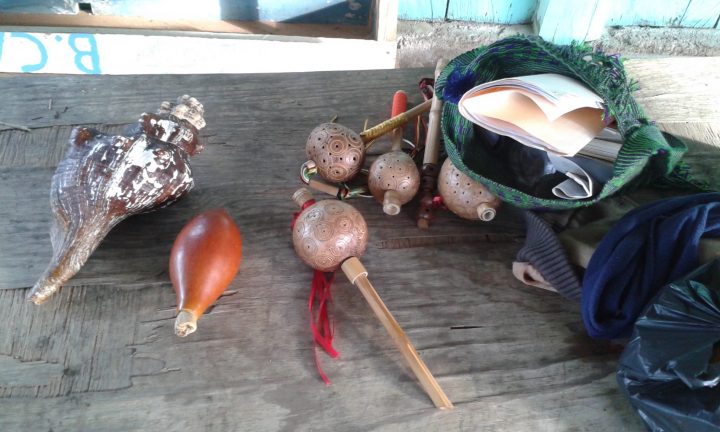Among Mexican communities, traditional doctors from the native peoples gather to fight for the survival of their culture. “Our organization is almost twenty years old. We woke up and said Enough! to the oppression of religions. Many churches continue to offend and trample us with their prohibitions, insults and indifference to our culture. They say that our curanderos (local shamanic figures) do not receive their gifts from God, they declare that we cannot help people to heal spiritually and that the Mayan Altar is a symbol of the devil,” affirms an elderly member of the Indio Theology.
“It is true that some who say they are traditional doctors take advantage of the sufferings of our brothers: they get paid and often have not received the spiritual gift,” continues the tatik (tzeltal term of respect for the elderly, with the literal meaning of ‘father’). “These are not curanderos, they do not work for the light, but for darkness. We accept the presence of some pastors or priests, as long as they come to learn and not to impose, to fight with us for our culture”.
The traditional doctors of Indio Theology in Chiapas come from the Zapatista world and are almost all former members of the EZLN (Zapatista Army of National Liberation – Translator’s Note). This theological current has an ecumenical and interreligious structure and promotes the union between different religious groups that are literally fragmenting the social structure of communities and individual families creating strong conflicts and internal divisions.
“Much of our knowledge has been lost with the arrival of the conquistadores. We have been persecuted and we still feel oppressed by these systems of life that do not belong to us. When we organize meetings in different communities, we share our knowledge. We try to recover our roots. We rediscover our sacred books and the calendars of the ancients. We rediscover our nawales (particular energies linked to the day of birth), which protect us and infuse us with energy thanks to their animal characteristics. They help us to understand our mission in this world,” continues the old man. “We exchange opinions on the spirituality of Mother Earth and Grandma Moon, we ask our elders to interpret dreams and visions we have at a certain time of night. We share our knowledge about medicinal plants and much more. We must share with the community and not be selfish.”
All this knowledge is then connected with current religious beliefs, forming a syncretic religious system. The coordinators of Indio Theology organize national and continental meetings deciding on the topics to be discussed. Next year, for example, they will meet in Tabasco at the national level and probably in Panama as far as the American continent is concerned.
The sonajas or maracas in the photo represent the voice of the ancients who return to advise the participants of rituals or assemblies. White fabrics embroidered at the edges are worn by the shamans during the rituals, while flowers between one candle and another are the tools of care given to the curandero during one of their visions. Incense is the “perfume of God”, paraphrasing the curandero himself, an element that blesses the people present and sacralises the ritual. All these cultural artefacts are characteristic of the Mayan Tzeltal culture.
Translation from Italian by Thomas Schmid










